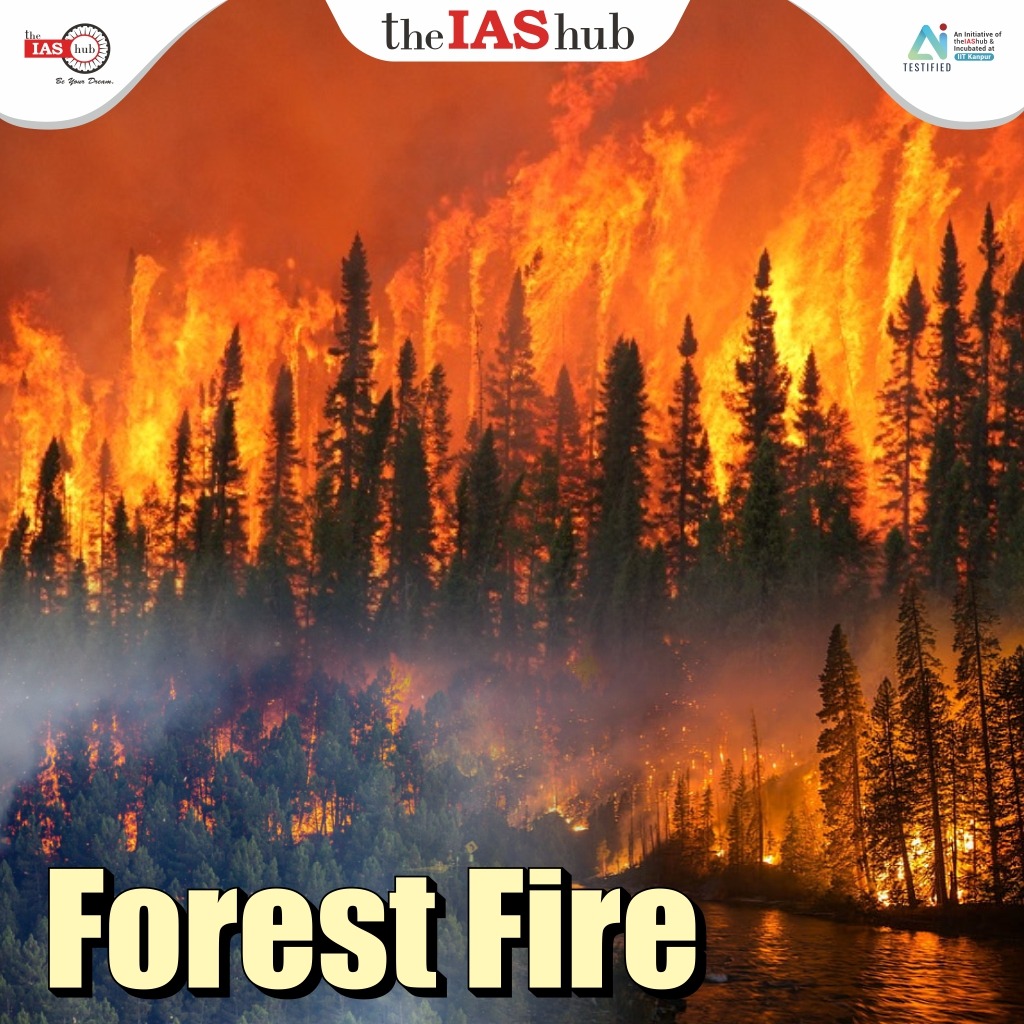Forest fires, also known as wildfires, are uncontrolled fires that rapidly spread across vegetation and forested areas, fuelled by dry conditions, wind, and flammable material. They are a natural and integral component of many ecosystems, promoting plant diversity and renewal. However, when severe or frequent, they can cause extensive damage to ecosystems, property, and human lives.


Forest fires, also known as wildfires, are uncontrolled fires that rapidly spread across vegetation and forested areas, fuelled by dry conditions, wind, and flammable material. They are a natural and integral component of many ecosystems, promoting plant diversity and renewal. However, when severe or frequent, they can cause extensive damage to ecosystems, property, and human lives.
|
In News: India has seen a 115% increase in forest fires in the first 12 days of March on the back of almost no rains in February and hotter-than-normal temperatures.
Causes of Forest Fire
Impacts on forest fire:
Solution for forest fire:
Conclusion:
Forest fires' recurrence in recent days is increasing hence there is need to adopt an adaptive management plan is critical. Effective community participation, and creating fire-resilient and adaptive initiatives with increasing green cover are need of the hour. Together using nature-based solutions we will avoid such incidences.


Refine your answer writing skills and elevate your UPSC preparation with personalized support and expert feedback.
Fill out the form to get started with the program or any other enquiries !








Are you dreaming of becoming an IAS officer? Then, IAShub can be your best guide. It is one of the Best IAS Coaching in Delhi. Many students who want to clear the UPSC exam join IAShub for learning. The institute gives both online and offline classes. Their teachers are experienced and helpful. They easily explain every topic. Students also get notes, tests, and tips to do well in the exam.
IAShub is in Delhi and is trusted by many UPSC students. It offers coaching for every part of the UPSC exam – Prelims, Mains, and Interview. The classes are simple and easy to understand. The teachers are experts and guide students in the right way. IAShub is also known for its helpful notes, test series, and answer-writing practice. IAShub is the best coaching in Delhi and also gives UPSC Online Classes. This helps students from any place in India to learn. The online classes are live and also recorded. So, students can watch them anytime. These classes cover the full UPSC syllabus.
Here are some important services provided by IAShub:
The UPSC Civil Services Exam has three parts:
This exam is tough, but with the right guidance, it becomes easy to manage. Students must study smart and stay regular.
IAShub supports students from the beginning to the end. It gives the right books, tests, and notes. The classes are easy to follow, and the teachers are always ready to help. Students get personal doubt sessions too. The test series and answer checking help students learn where they need to do better. Also, free study materials save time and money.
IAShub also guides students during the final stage – the interview. Experts take mock interviews and give useful tips. This full support makes IAShub one of the best IAS coaching in Delhi.